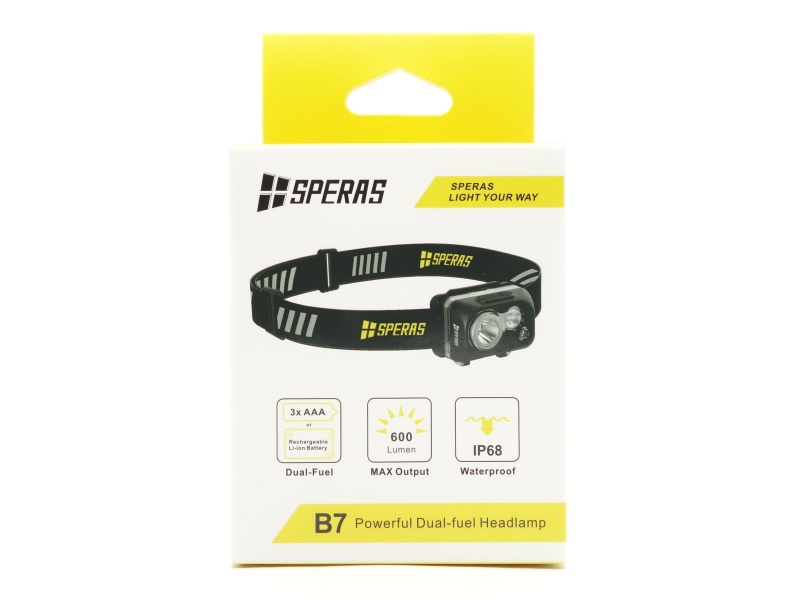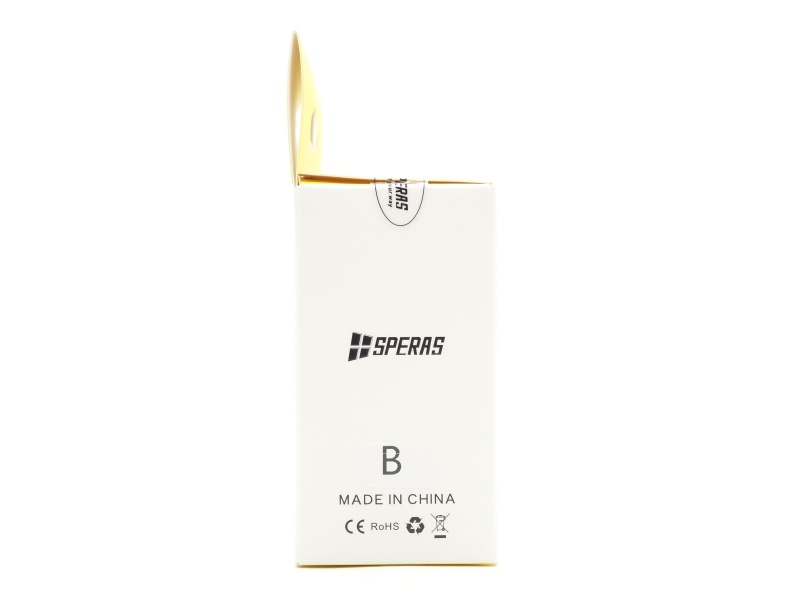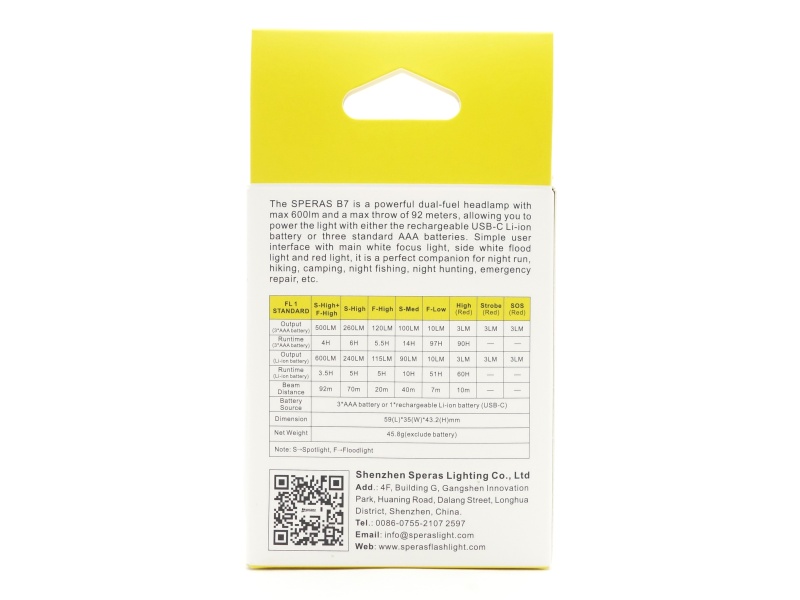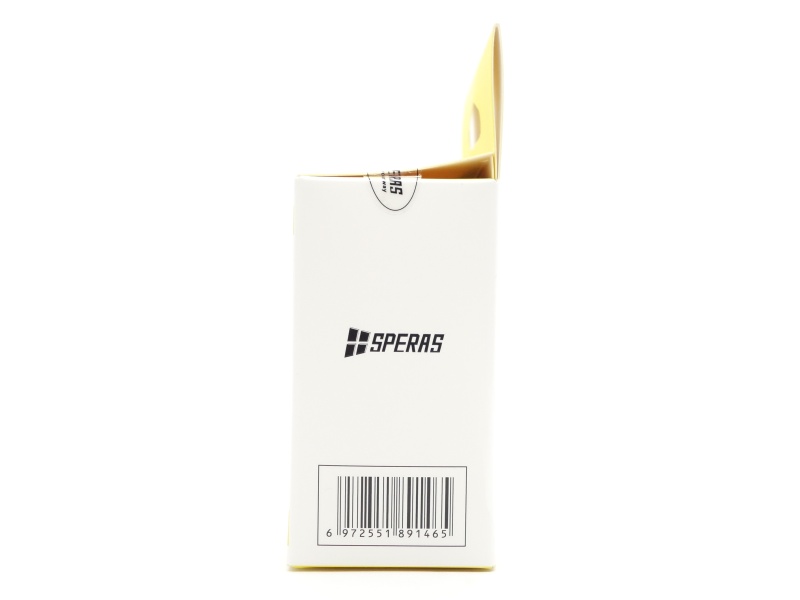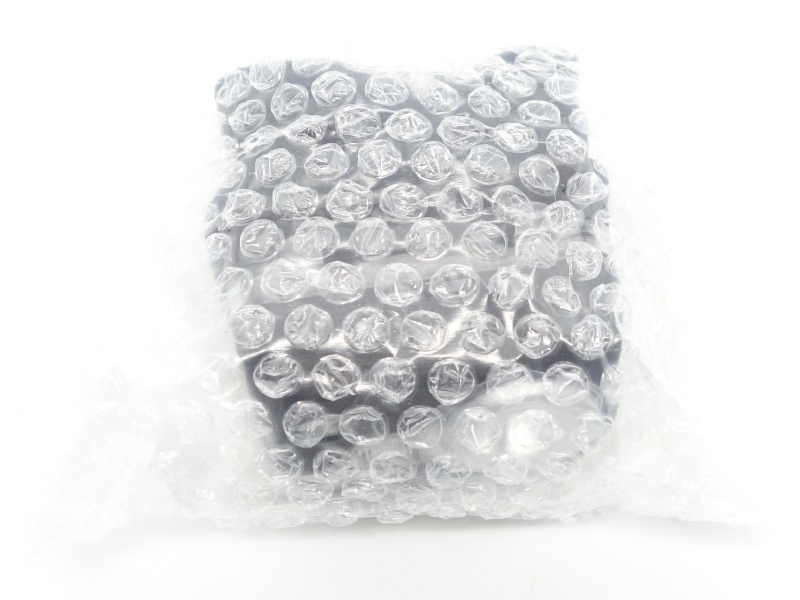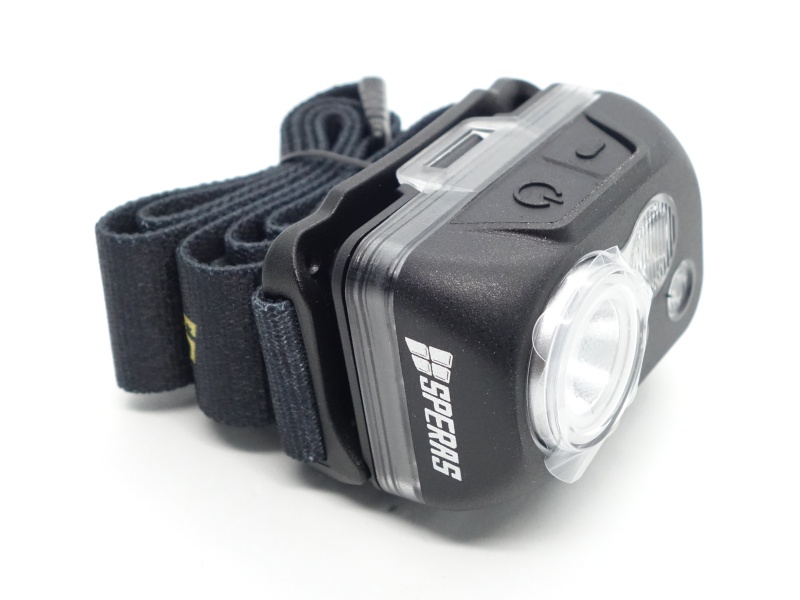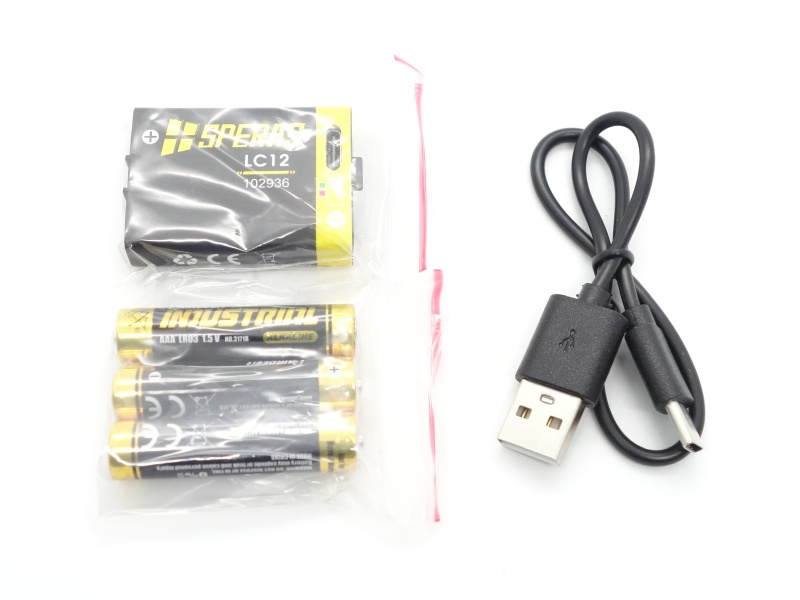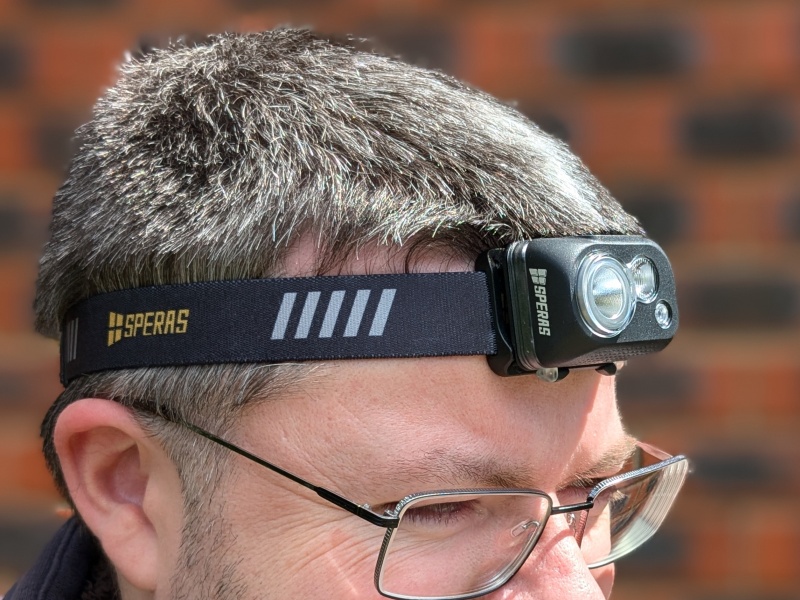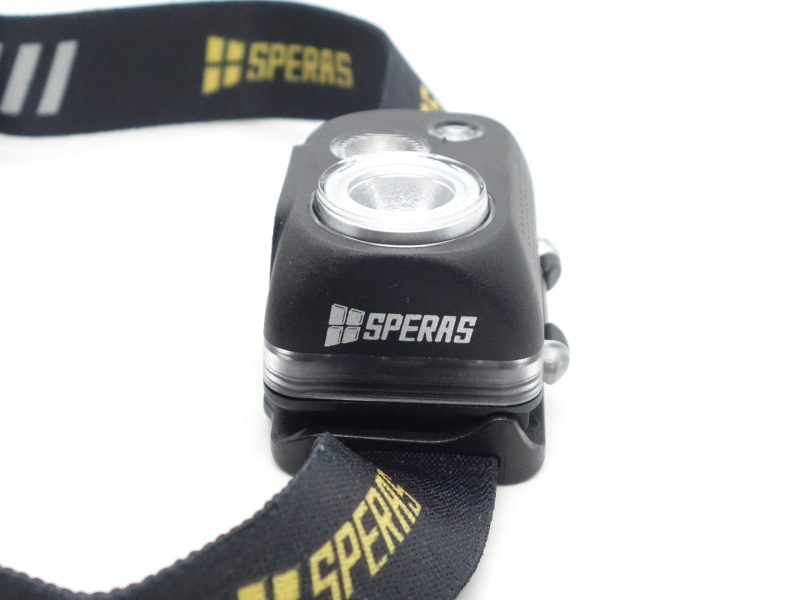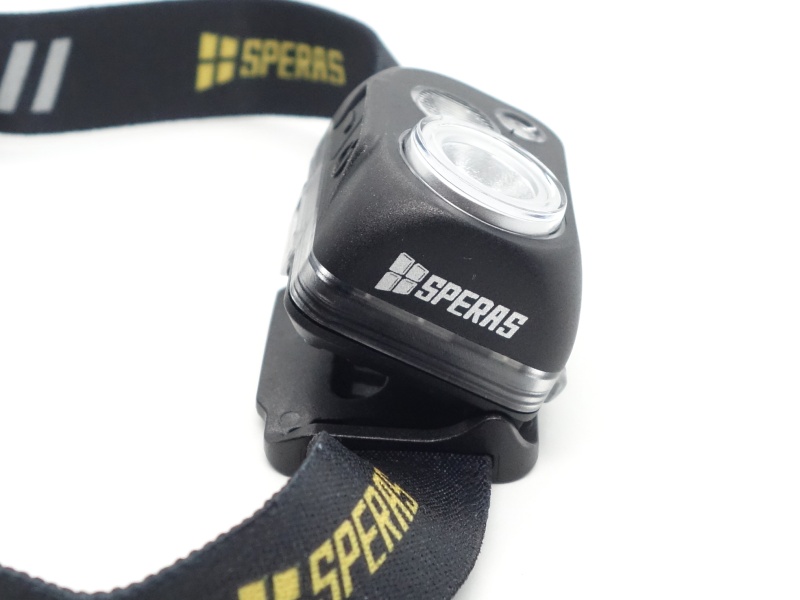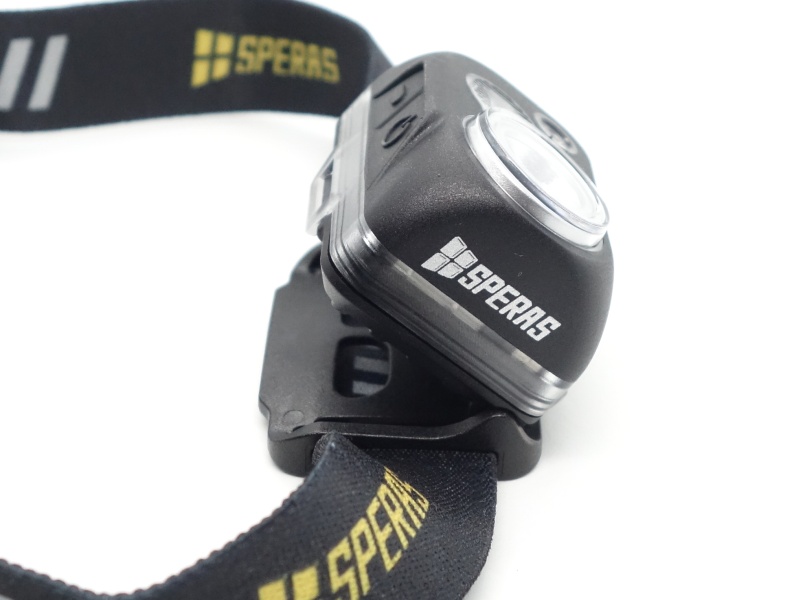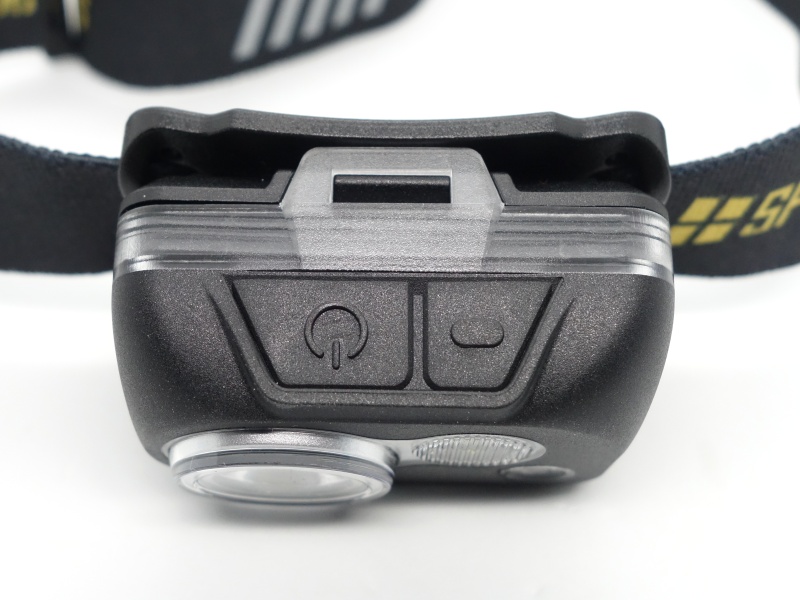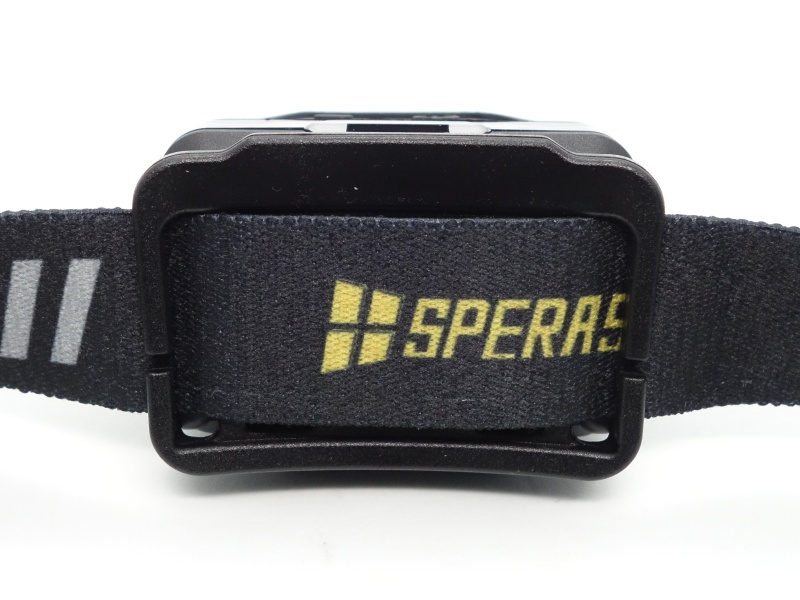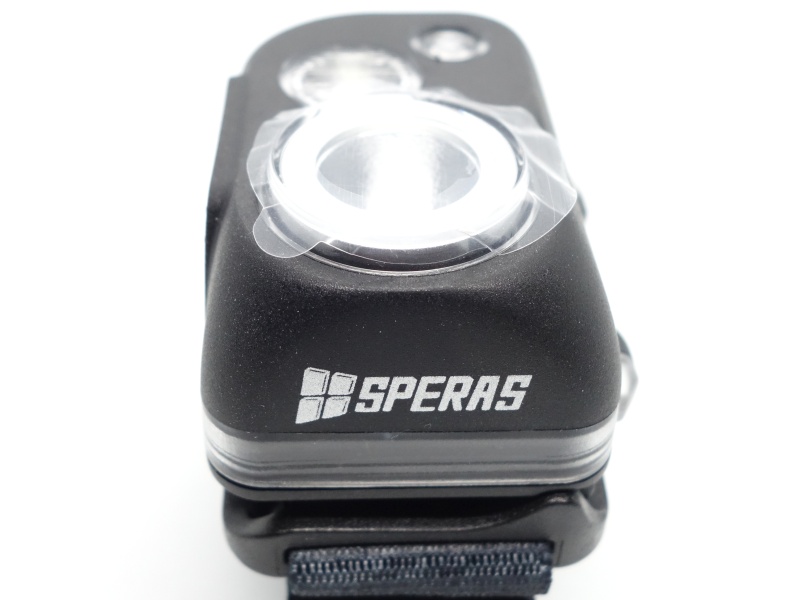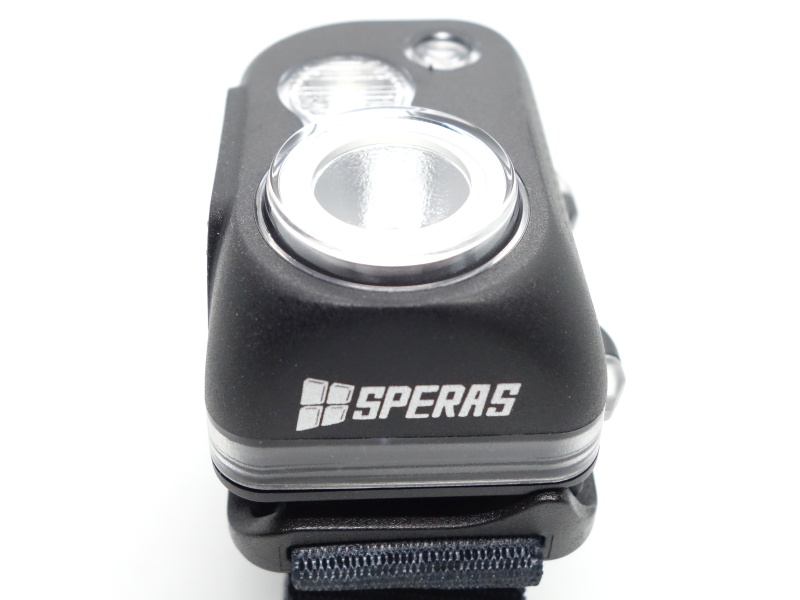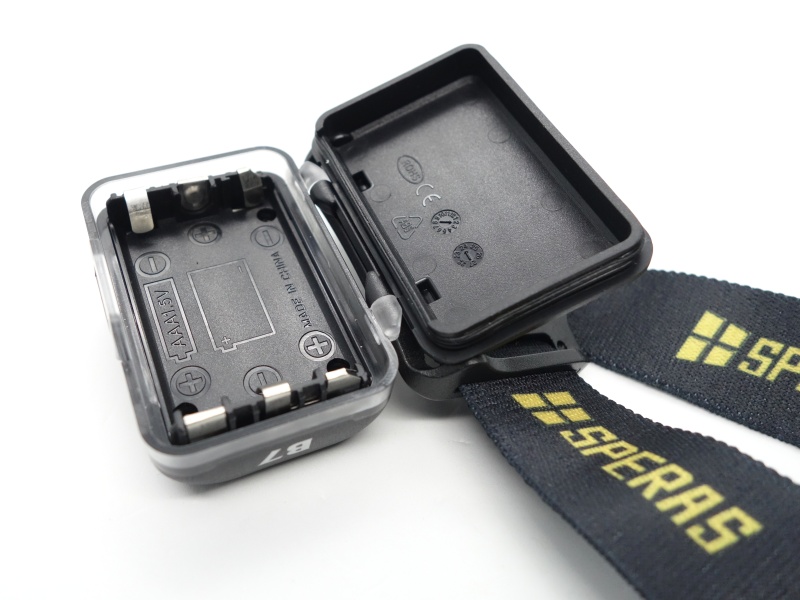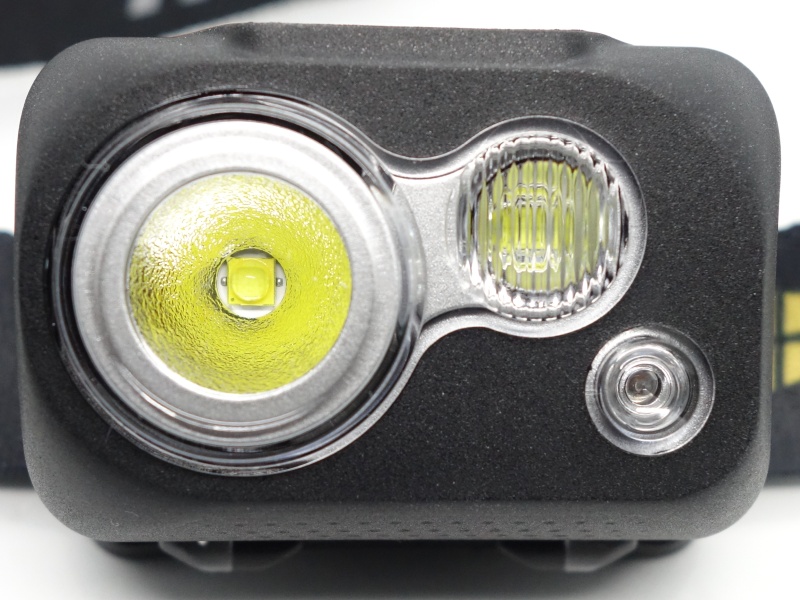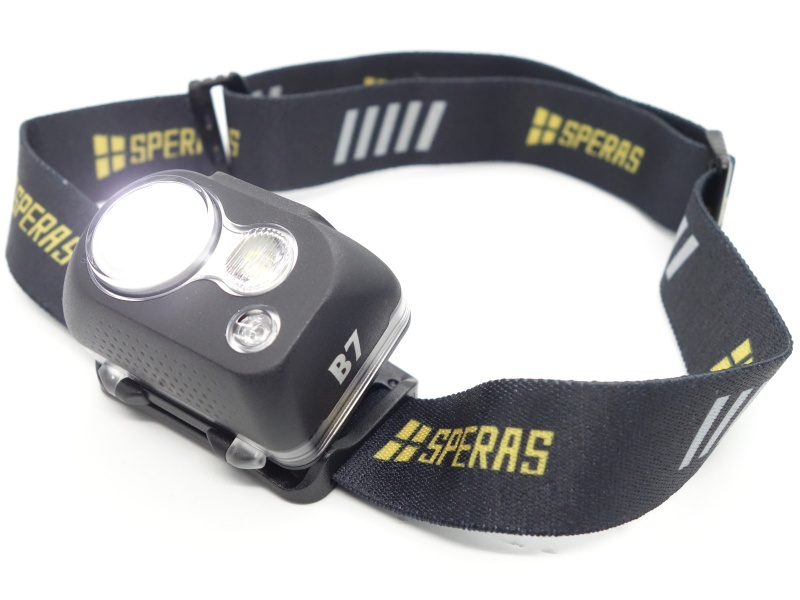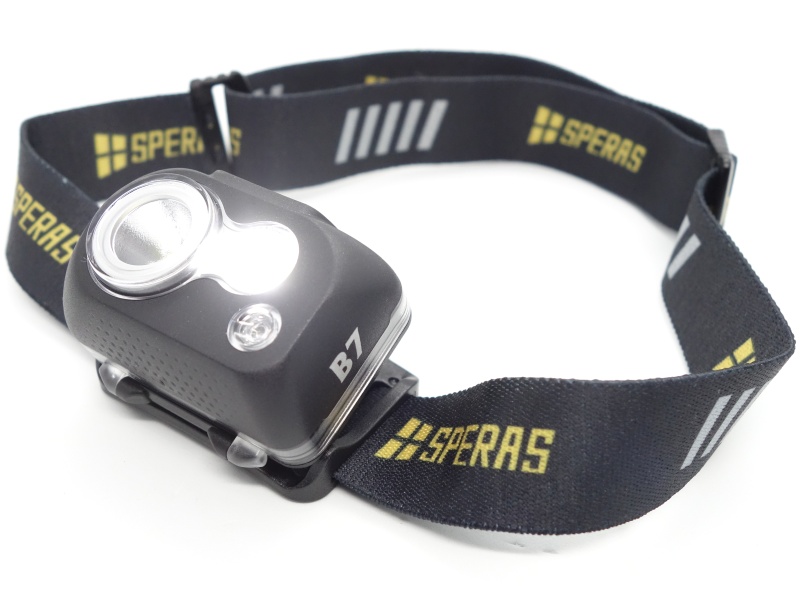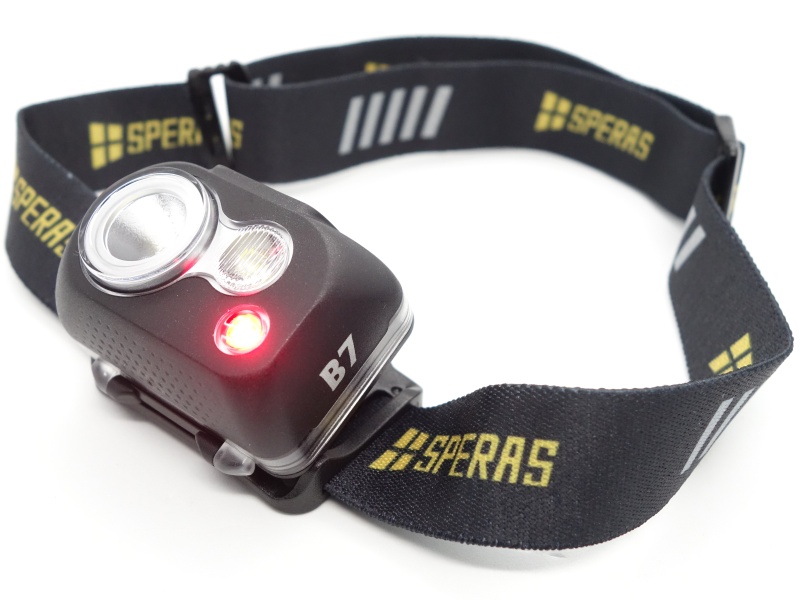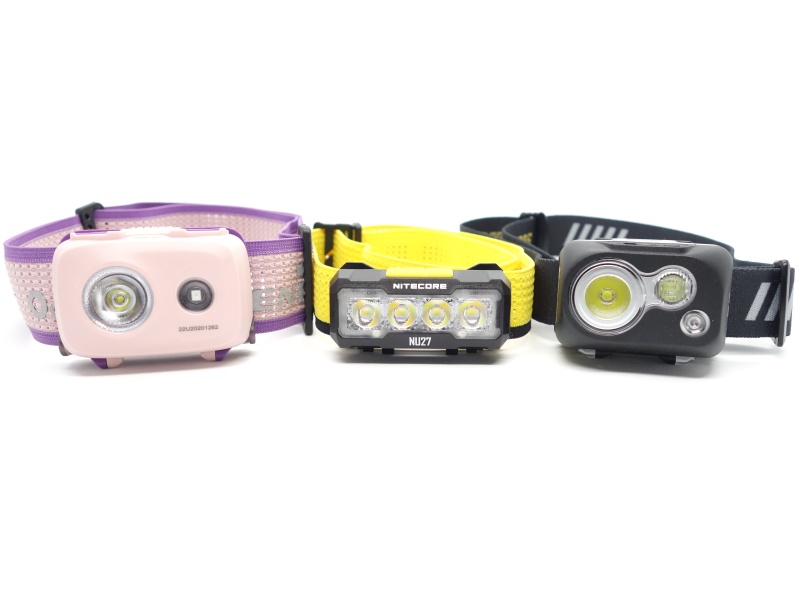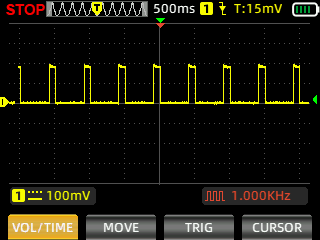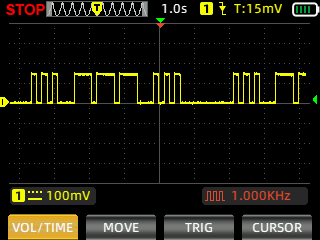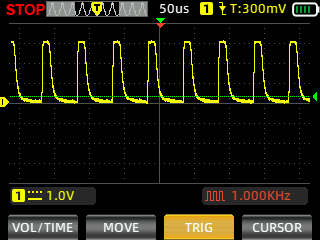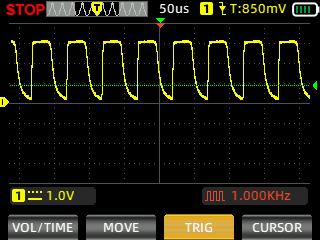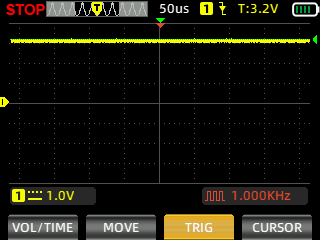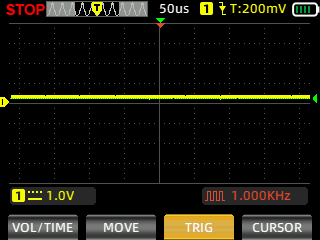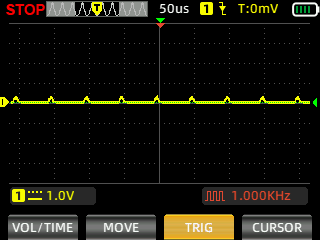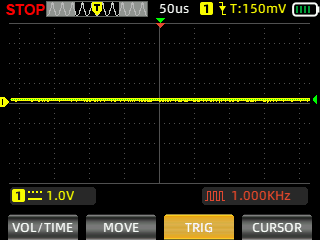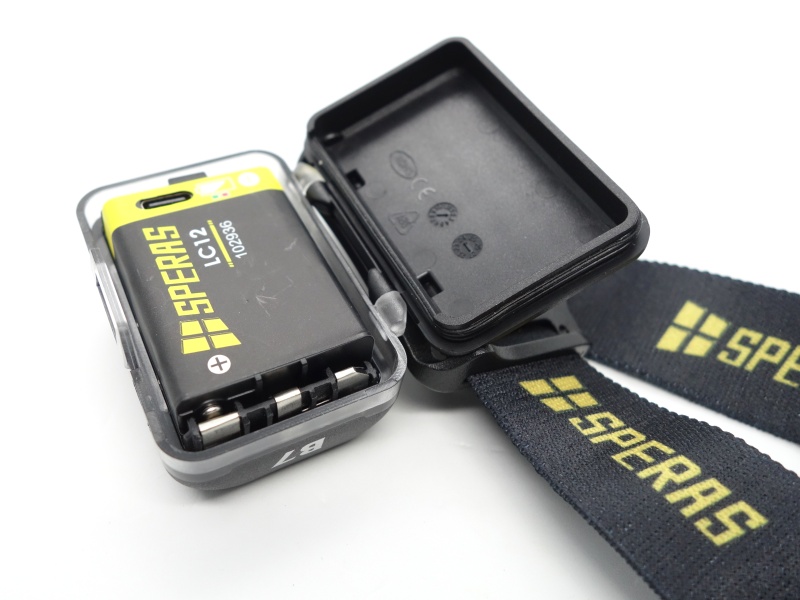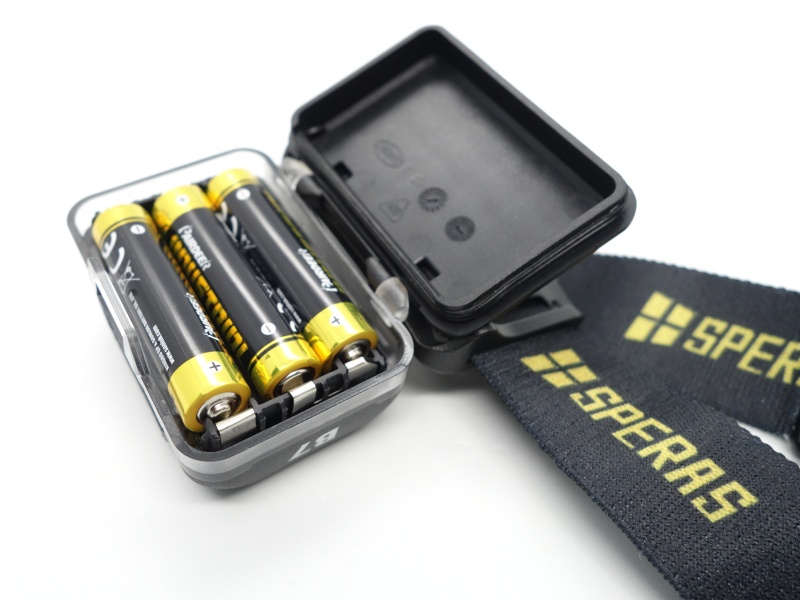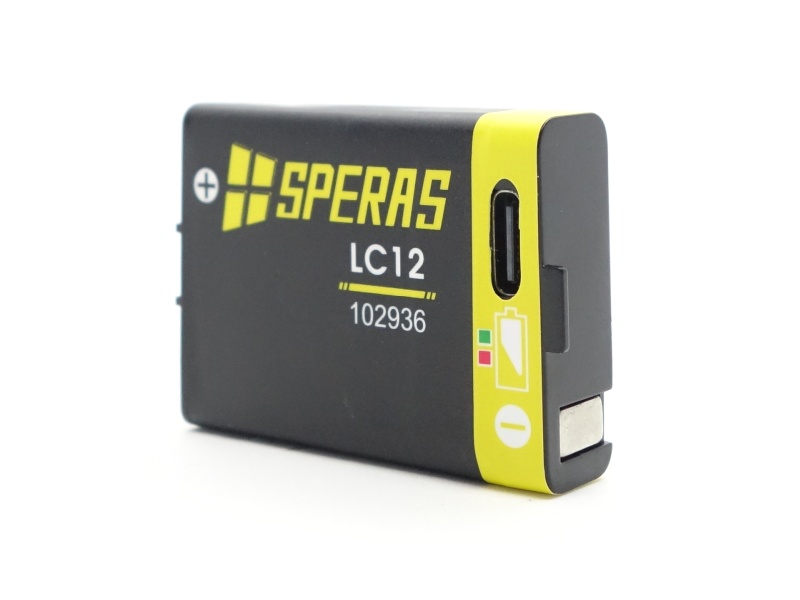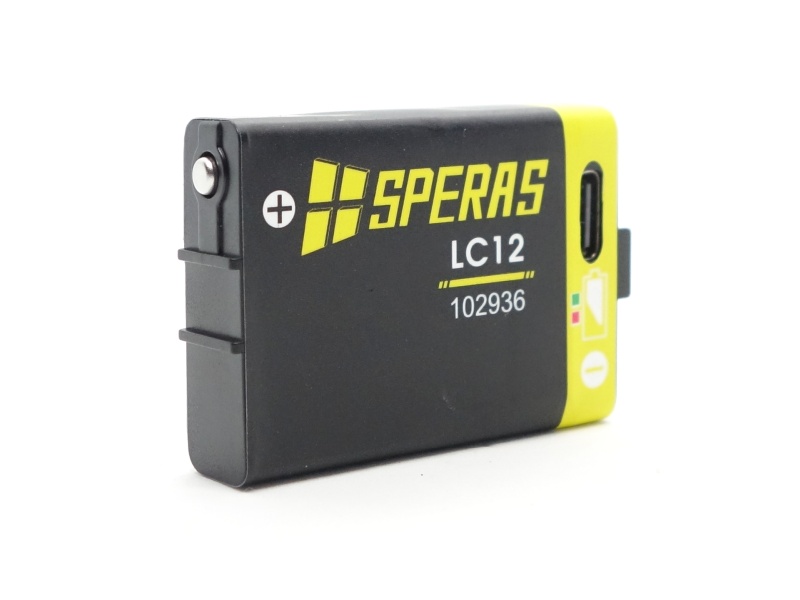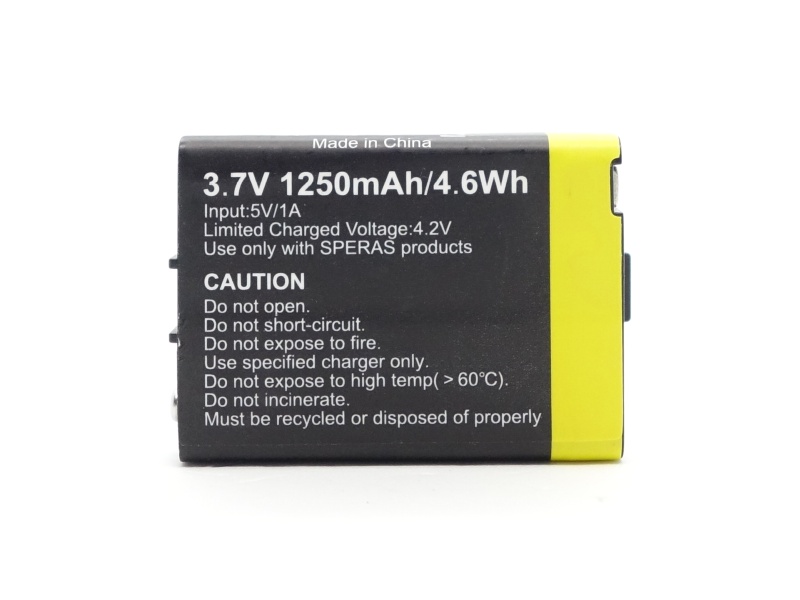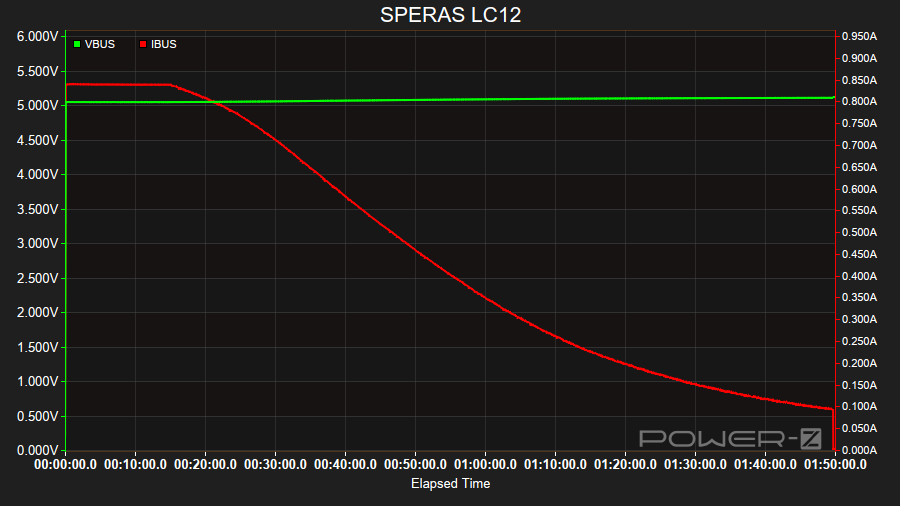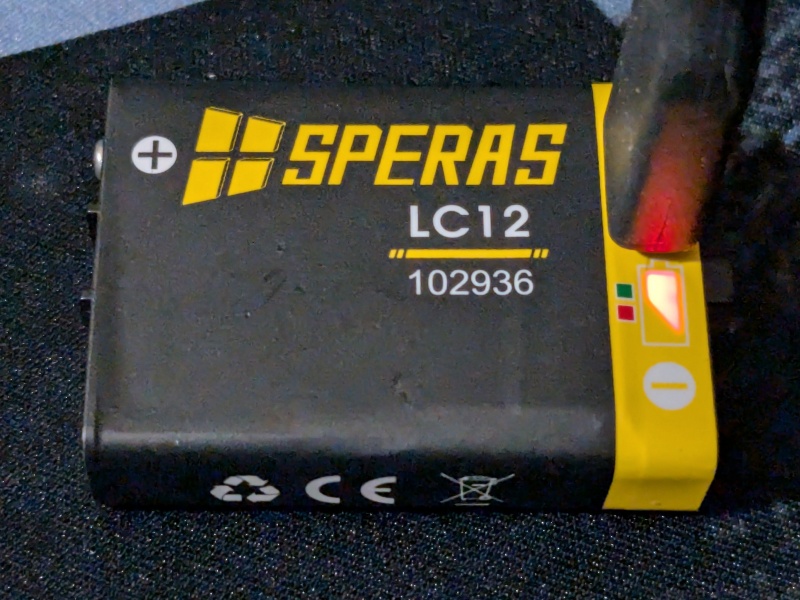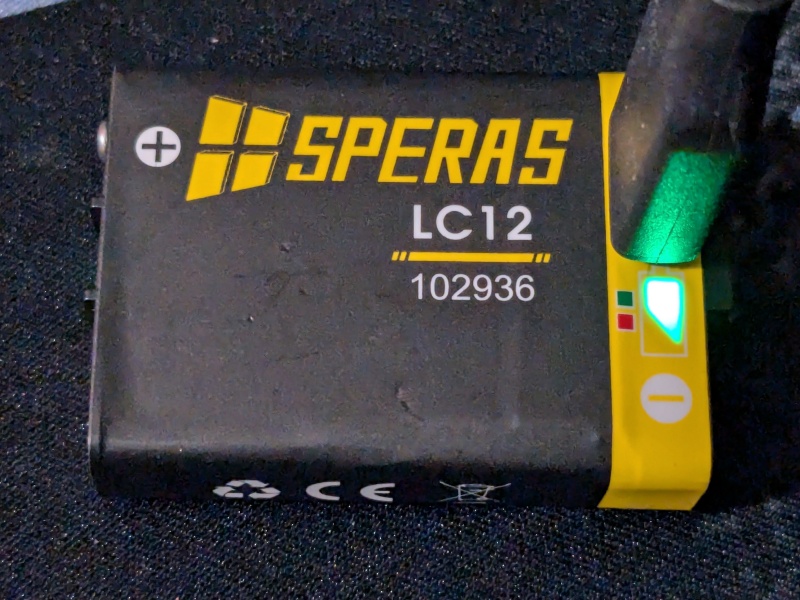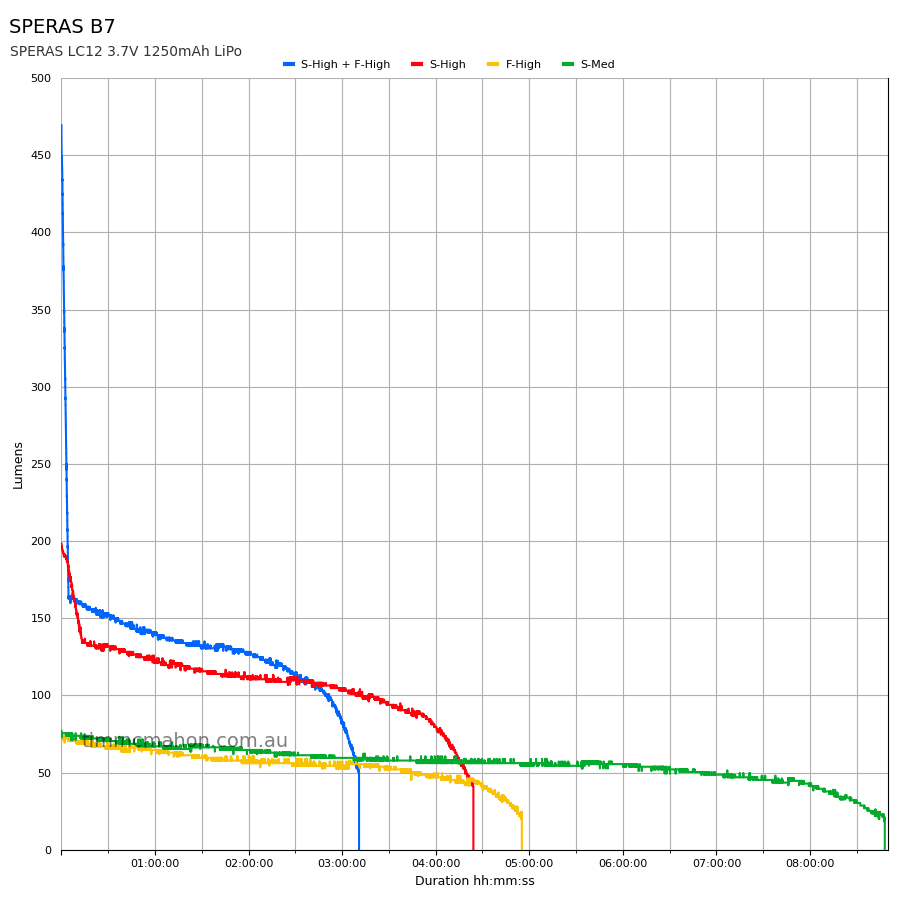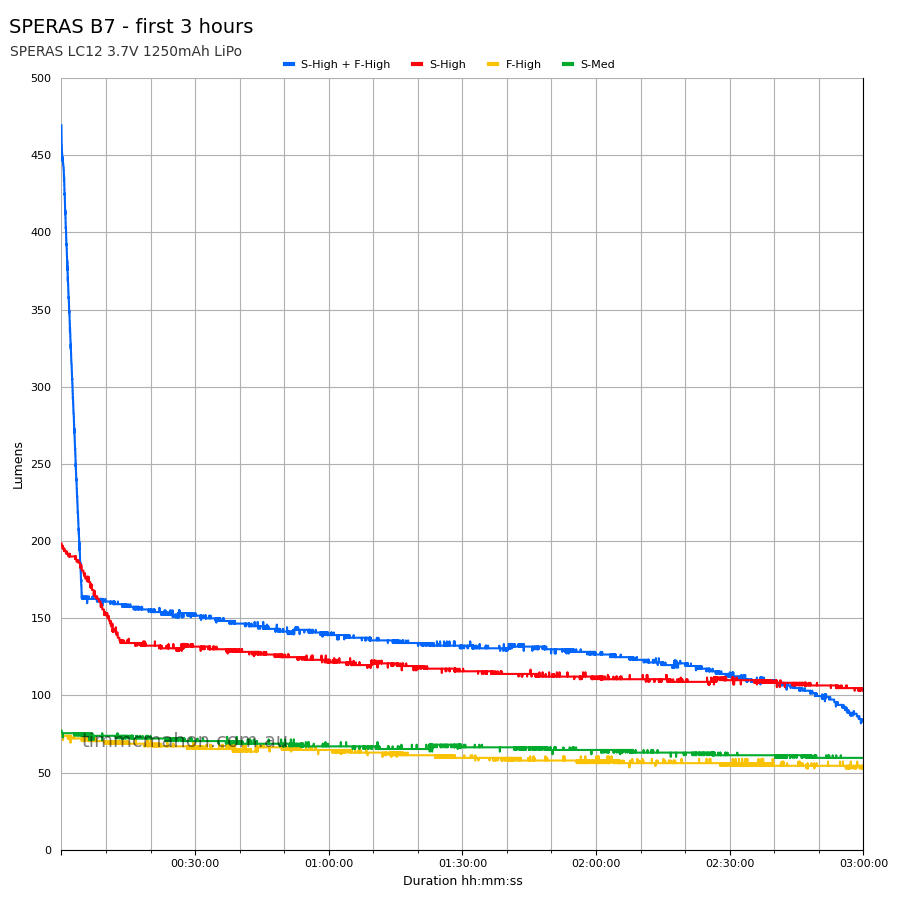SPERAS B7 Headlamp Review
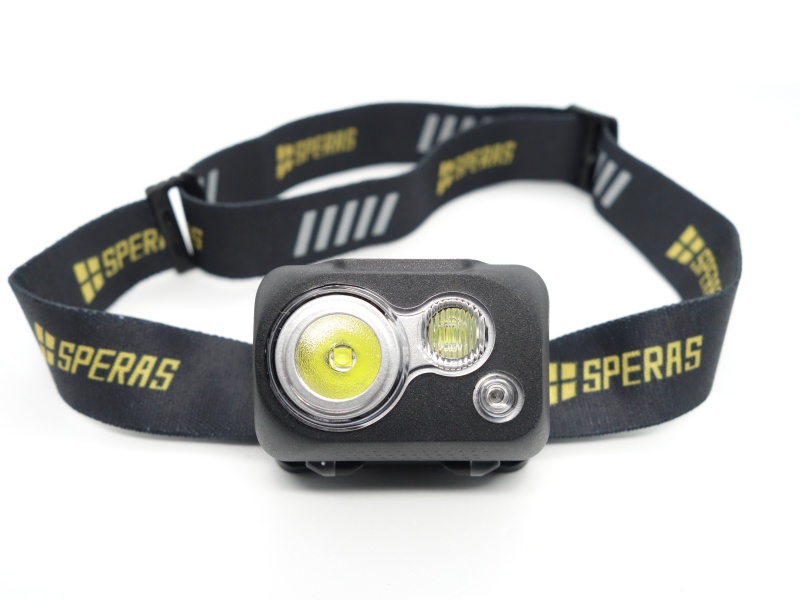
SPERAS B7#
- Specifications
- Introduction
- Torch in use
- Build quality
- LED, bezel, lens and reflector
- Size and comparison
- User interface
- Batteries and charging
- Performance
- Beamshots
- Conclusion
- Price
- Product page
Specifications#
| Brand/model | SPERAS B7 |
|---|---|
| LED | Cool White Spotlight, Cool White Floodlight, Red Light |
| Maximum lumens | 600 lm |
| Maximum throw | 92 m |
| Battery | 3*AAA, SPERAS LC12 3.7V 1250mAh LiPo |
| Onboard charging | No (SPERAS LC12 has USB-C) |
| Material | Plastic |
| Modes | 5 |
| Blinkies | Red (Strobe, SOS) |
| Reflector | OP (Spotlight), TIR (Floodlight), TIR (Red Light) |
| Review date | October 2024 |
Introduction#
The SPERAS B7 is a lightweight headlamp with a spotlight, floodlight and a red light. It takes three AAA batteries or a SPERAS LC12 3.7V 1250mAh LiPo battery with USB-C charging built into the battery. The angle of the headlamp can be adjusted. There are two buttons to control the white and red lights.
I have reviewed a few SPERAS torches in the past. I really like the SPERAS M4 pocket thrower.
SPERAS provided this torch for review. I have not been paid for this review nor have I held back my opinions of this torch.
Packaging#
The SPERAS B7 comes in a yellow SPERAS branded box with an image of the headlamp on the front and specifications on the back.
The following was included in the box:
- SPERAS B7.
- SPERAS LC12 3.7V 1250mAh LiPo battery with USB-C charging.
- 3*AAA Alkaline batteries.
- USB-A to USB-C cable.
- User manual.
Torch in use#
The SPERAS B7 feels lightweight and comfortable on my head.
There are reflective bits on the adjustable headband.
The angle of the headlamp can be adjusted by rotating it down.
Build quality#
The SPERAS B7 is made of plastic.
The hinge for the battery compoartment and the clip seem sturdy. I would not want to drop this on concrete or drive over it with a car though.
The headband can be removed to clean it.
The lens for the spotlight came with a protective film.
The battery compartment has a gasket around it to try to prevent water getting in. That said, I did not see any water or dust rating for the SPERAS B7.
One of the negative terminals in the battery compartment became too compressed after using three AAA cells. The included LiPo battery did not work until I fixed a negative terminal in the battery compartment by pulling it out slightly.
Overall, the quality is ok. It seems like a budget light and it is priced appropriately.
LED, bezel, lens and reflector#
This SPERAS B7 has a cool white spotlight with an Orange-Peel reflector, a cool white floodlight behind a TIR optic, a red light behind a TIR optic.
CCT, CRI, and duv#
I have taken Correlated Colour Temperature (CCT) and Colour Rendering Index (CRI, RA of R1-R8) measurements with the torch positioned one metre away from an Opple Light Master Pro III (G3).
The CCT is around 5800K, the CRI is around 70, and the Delta u, v is positive (slightly green) for the floodlight.
The CCT is around 6450K, the CRI is around 72, and the Delta u, v is positive (less green) for the spotlight.
The floodlight produces a slightly rectangular beam with some artefacts in the beam.
The spotlight produces a beam with a hotspot surrounded by a green corona, and a purple spill.
| Mode | CCT (K) | CRI (Ra) | x | y | Duv |
|---|---|---|---|---|---|
| S-Med | 5821 | 69.9 | 0.3251 | 0.3464 | 0.0060 |
| S-High | 5790 | 70.2 | 0.3257 | 0.3466 | 0.0059 |
| S-High + F-High | 5818 | 70.0 | 0.3251 | 0.3464 | 0.0060 |
| F-High | 6482 | 73.0 | 0.3135 | 0.3263 | 0.0014 |
| F-Low | 6423 | 72.6 | 0.3146 | 0.3257 | 0.0005 |
Calculate Duv from CIE 1931 xy coordinates
Dimensions and size comparison#
Dimensions#
I took the following measurements using a digital caliper.
| Measurement | Unit (mm) |
|---|---|
| Length | 59.0 |
| Width | 37.88 |
| Height | 43.35 |
| LC12 length | 44.98 |
| LC12 width | 10.71 |
| LC12 height | 31.14 |
Weight#
I took the following measurements using a digital scale.
| Weight | Unit (g) |
|---|---|
| SPERAS B7 with headband | 69.21 |
| SPERAS LC12 | 26.69 |
Size comparison with its competition#
From left to right: Fenix HL16, Nitecore NU27, SPERAS B7
User interface#
The SPERAS B7 has two buttons to control the headlamp.
The main button with a power indicator symbol controls the spotlight and the floodlight.
It can be clicked to turn the light on and off or to cycle through each mode.
The cycle order is: S-Med, S-High, S-High + F-High, F-High, F-Low, Off.
Clicking the main button after 3 seconds while a white light is on will turn the headlamp off.
The red light button with a minus symbol can be clicked to turn the red light on and to cycle through each mode.
The cycle order is: High, Strobe, SOS, Off.
Clicking the red light button after 3 seconds while the red light is on will turn the headlamp off.
White and red lights cannot be turned on at the same time.
Mode memory#
There is no mode memory.
Strobe#
The red light has a strobe mode.
Strobe has a constant frequency.
This is what SOS looks like with the red light:
I measured Strobe with a Zoyi ZT-703S oscilloscope using High Speed mode.
Low voltage protection#
The torch has low voltage protection. It turns off around 2.66V.
I tested low voltage protection by connecting the driver of the torch to a bench power supply and then by lowering the voltage from 4.2V to 0V.
| Mode | LVP? | Cut-off |
|---|---|---|
| S-Med | Yes | 2.66V |
| S-High | Yes | 2.66V |
| S-High + F-High | Yes | 2.66V |
| F-High | Yes | 2.66V |
| F-Low | Yes | 2.66V |
Pulse Width Modulation#
I did not notice any visible PWM (flickering).
I measured the PWM of the light with a Zoyi ZT-703S oscilloscope.
S-Med, S-High, S-High + F-High, F-High, F-Low
Red
What I like about the UI#
It is simple to use due to having one button for white lights and another button for the red light.
I like how both the spotlight and the floodlight can be used at the same time.
What could be improved#
The UI is a bit too simple. You do not have full control over the brightness of the spotlight or the floodlight.
You have to cycle through particular modes: S-Med, S-High, S-High + F-High, F-High, F-Low.
It would be even better if the user could directly access the floodlight or the spotlight from off and control the individual brightness levels of each. But this could make the user interface quite complex.
Batteries and charging#
Battery#
The SPERAS B7 takes one SPERAS LC12 3.7V 1250mAh LiPo battery or three AAA 1.5V Alkaline batteries.
The SPERAS B7 comes with three AAA Alkaline 1.5V batteries and a USB-C rechargeable SPERAS LC12 3.7V 1250mAh LiPo battery.
The LiPo battery arrived with a voltage of 3.897V.
Charging#
Power supply: PinePower Desktop USB-C
USB Meter: ChargerLAB Power-Z KM003C
Room temperature: 16 C
I charged the included USB-C rechargeable battery from 3.895V to 4.119V.
It took 1 hour 50 minutes to fully charge at a rate of 5V/0.85A. The charge current gradually decreased over time.
I topped the cell up a few times and it reached 4.15V.
The status indicator on the battery changed from red to green when charging was complete.
Power supply compatibility#
I tried the following power supplies with the USB-A magnetic charging cable:
| Power supply | USB Type | Protocol | Does it charge? |
|---|---|---|---|
| PinePower Desktop | USB-C | PD | Yes |
| PinePower Desktop | USB-A | QC | Yes |
| PinePower Desktop | USB-A | Yes |
USB to USB-C charging works.
Performance#
Specifications from the manual:
| FL1 STANDARD | S-High + F-High | S-High | F-High | S-Med | F-Low | High (Red) | Strobe (Red) | SOS (Red) |
|---|---|---|---|---|---|---|---|---|
| Output (3*AAA) | 500lm | 260lm | 120lm | 100lm | 10lm | 3lm | 3lm | 3lm |
| Runtime (3*AAA) | 4h | 6h | 5h 30min | 14h | 97h | 90h | ||
| Output (LiPo) | 600lm | 240lm | 115lm | 90lm | 10lm | 3lm | 3lm | 3lm |
| Runtime (LiPo) | 3h 30min | 5h | 5h | 10h | 51h | 60h | ||
| Beam Distance (metres) | 92 | 70 | 20 | 40 | 7 | 10 |
S is Spotlight. F is Floodlight.
I have used a SPERAS LC12 3.7V 1250mAh LiPo for the following tests.
Lumen measurements#
I measured the current at turn on with a bench power supply.
| Mode | Amps at start | Specs | Lumens @turn on | Lumens @30 sec | Lumens @10 min |
|---|---|---|---|---|---|
| F-Low | 0.031 A | 10 | 8.5 | 8.5 | 8.5 |
| S-Med | 0.181 A | 90 | 77 | 75 | 73 |
| F-High | 0.338 A | 115 | 75 | 73 | 70 |
| S-High | 0.545 A | 240 | 198 | 195 | 153 |
| S-High + F-High | 1.557 A | 600 | 469 | 440 | 160 |
Standby drain#
0.3 µA
Runtime graphs#
I used my own DIY lumen tube with a TSL2591 sensor and forked bmengineer’s project RuTiTe to record runtimes.
Note: Lumen measurements may be off by 10% with my DIY lumen tube.
The room temperature was approximately 16 C.
Runtime#
Here is a summary of the runtime results:
| Mode | User manual | Runtime | Turn off | Final voltage |
|---|---|---|---|---|
| S-Med | 10h | 8h 47min 56s | 8h 47min 56s | 3.26 |
| S-High | 5h | 4h 23min 44s | 4h 23min 44s | 3.25 |
| S-High + F-High | 3h 30min | 3h 10min 23s | 3h 10min 23s | 3.19 |
| F-High | 5h | 4h 54min 47s | 4h 54min 47s | 3.22 |
| F-Low | 51h | 10min+ | 10min+ |
“Runtime” is the time until the output reduces to 10% of the output at 30 seconds (as per the ANSI/PLATO FL1 2019 Standard).
“Turn off” is the time until my DIY lumen tube no longer detects more than 1 lumen.
“+” indicates that the light remained on after recording had stopped.
The runtime was pretty close but it fell slightly short for each mode while using the included LiPo battery.
The output is stable but the regulation could be improved so that it does not slowly drop over time.
Throw#
I took lux measurements with a UNI-T UT383BT at 30 seconds. Each mode was measured at one metre.
| Mode | Specs (cd) | Specs (m) | Candela measured (cd) | Distance (m) |
|---|---|---|---|---|
| S-Med | 40 | 411 | 40 | |
| S-High | 70 | 1,013 | 63 | |
| S-High + F-High | 92 | 2,060 | 90 | |
| F-High | 20 | 158 | 25 | |
| F-Low | 7 | 12 | 6 |
Beamshots#
I went to a local park and aimed the SPERAS B7 at a tree 70 metres away while using Turbo.
Beamshots were taken using a Sony RX100M2 using 3.2", f3.2, ISO 100, 5000K WB.
SPERAS B7 (S-High + F-High)#
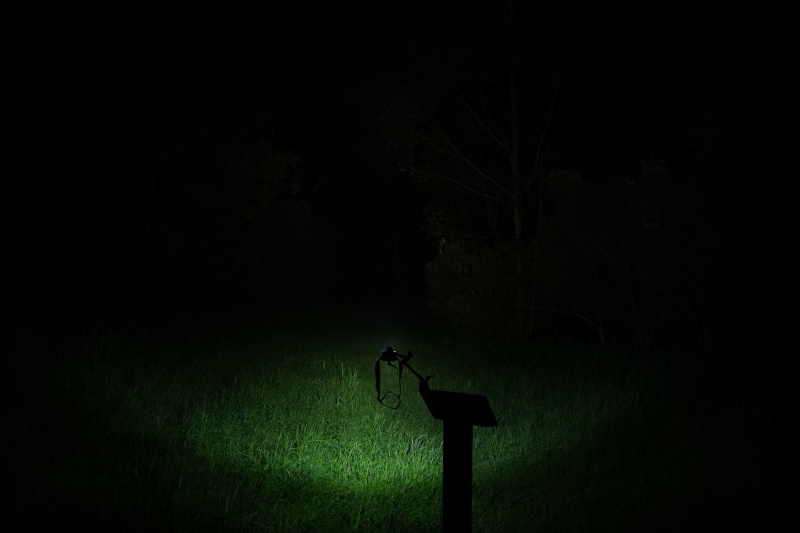
SPERAS B7 (S-High)#
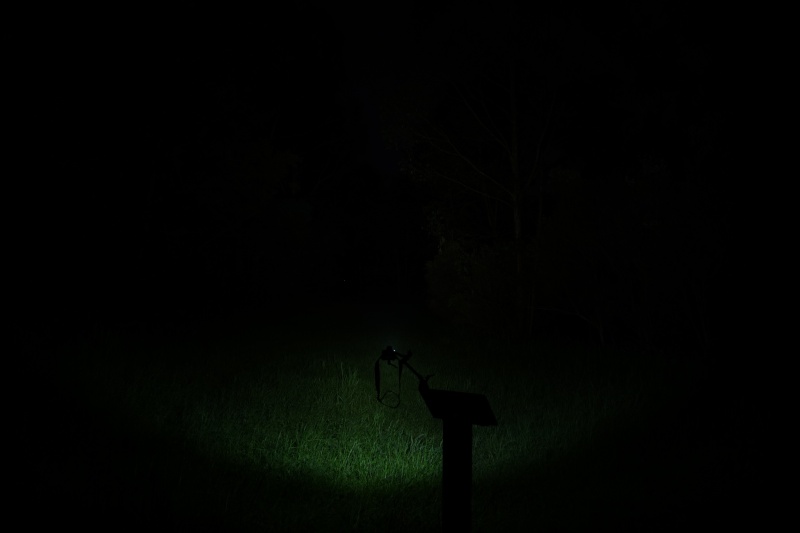
SPERAS B7 (F-High)#
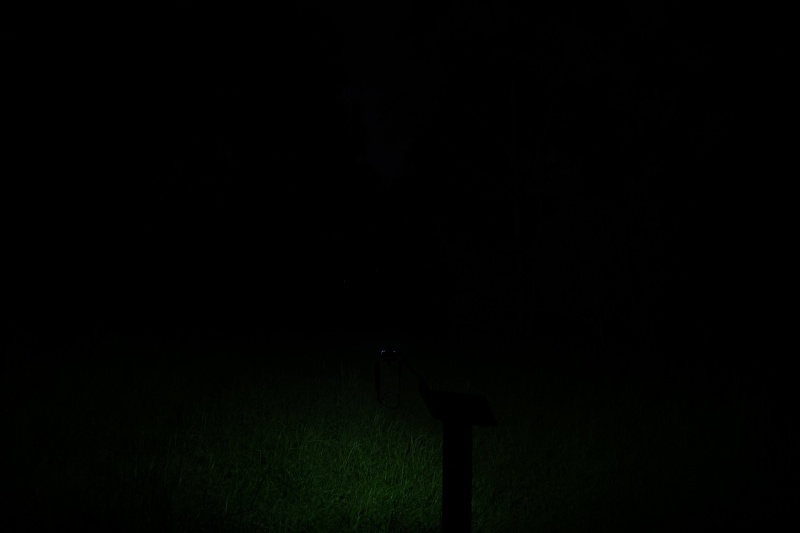
Fenix HL16 (Turbo)#
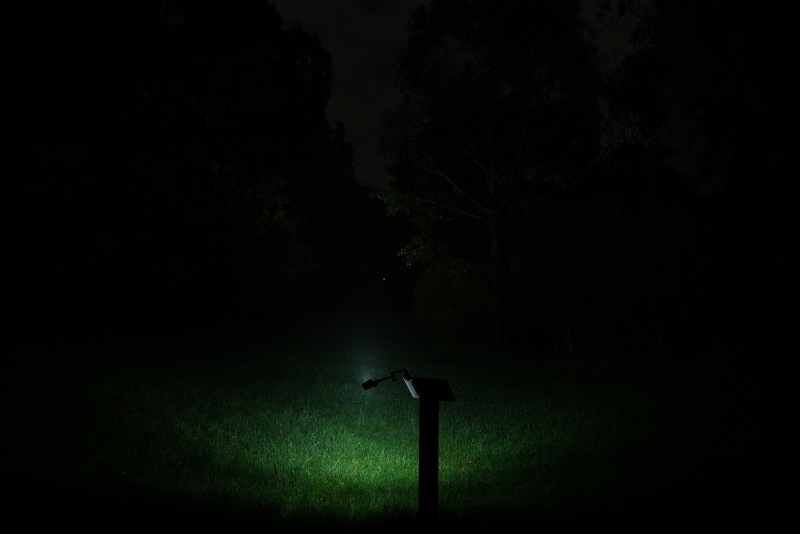
Nitecore NU27 (Turbo) Neutral#
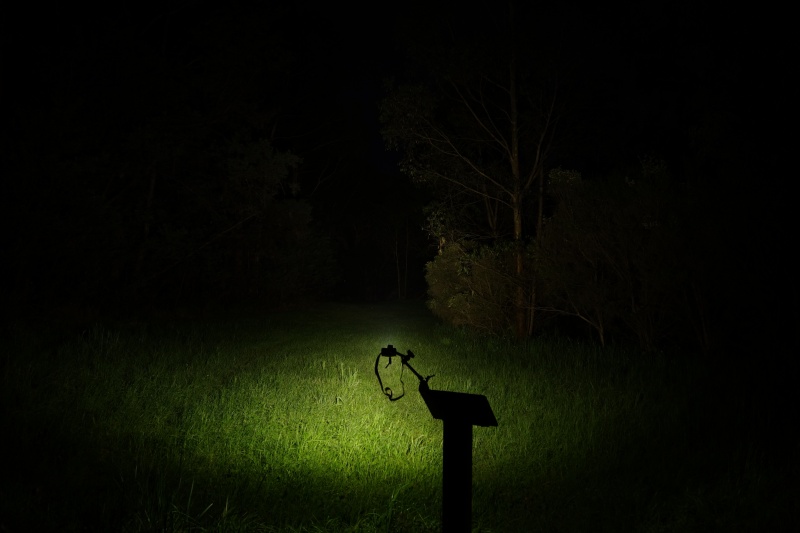
Nitecore NU27 (Turbo) Warm#
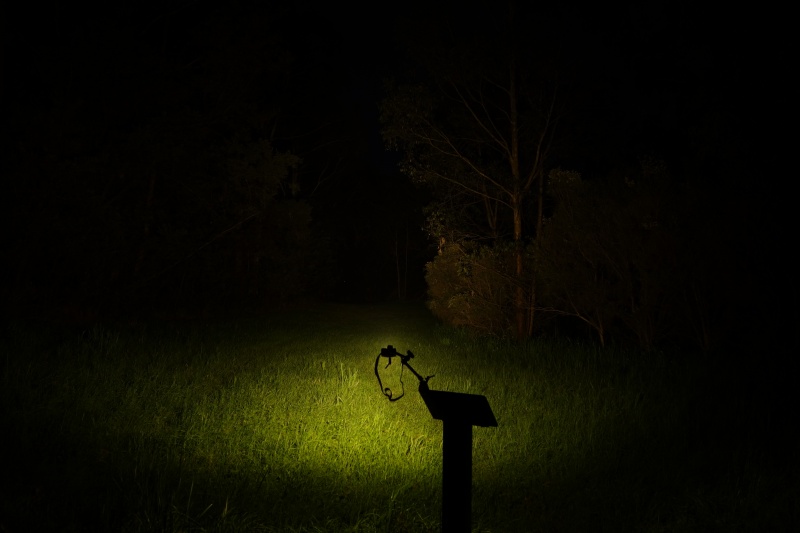
Nitecore NU27 (Turbo) Cool#
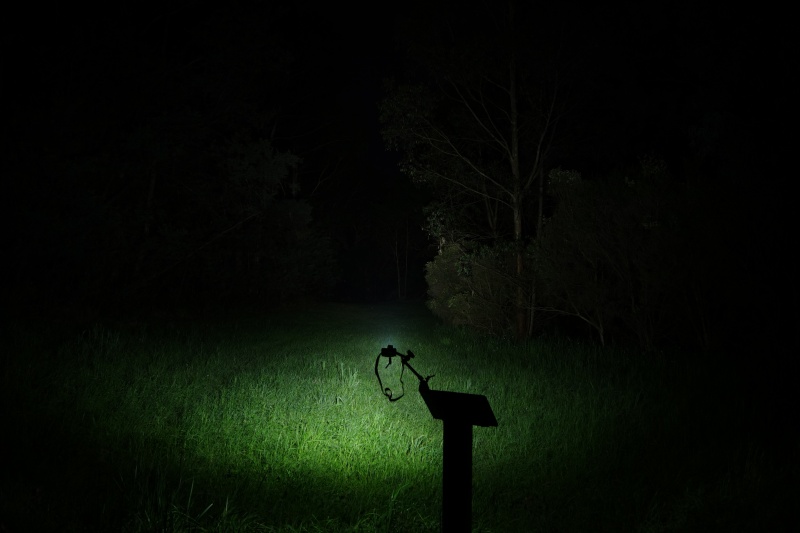
ZebraLight H53Fc N (H1)#
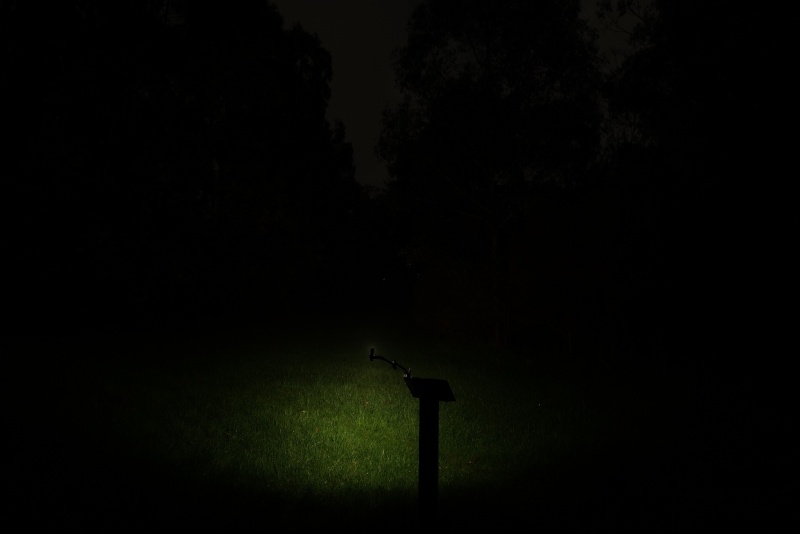
I later visited a playground and aimed the headlamp at a big apple approximately 2 meters away while using the red emitter.
Red beamshots were taken using a Sony RX100M2 using 0.25 second shutter, f3.2, ISO 800, 5000K WB.
SPERAS B7 (Red)#
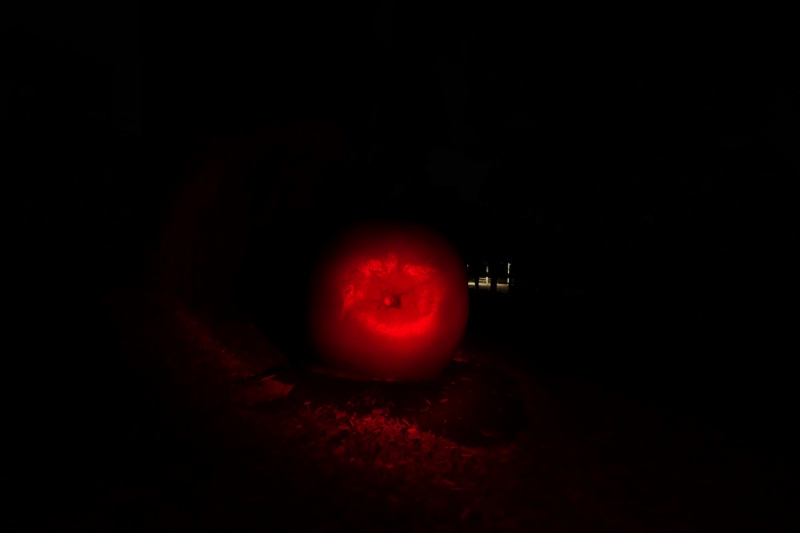
Nitecore NU27 (Red) High#
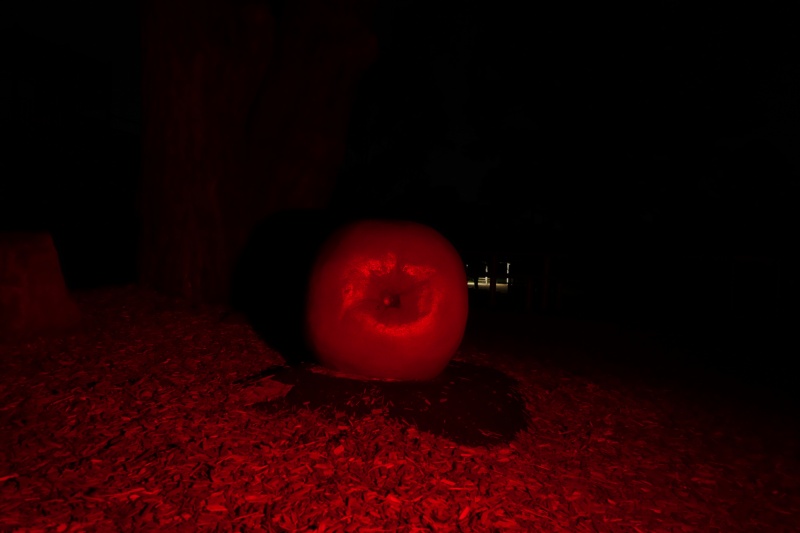
The following red beamshots were taken using a Sony RX100M2 using 0.4 second shutter, f3.2, ISO 800, 5000K WB.
Fenix HL16 (Red)#
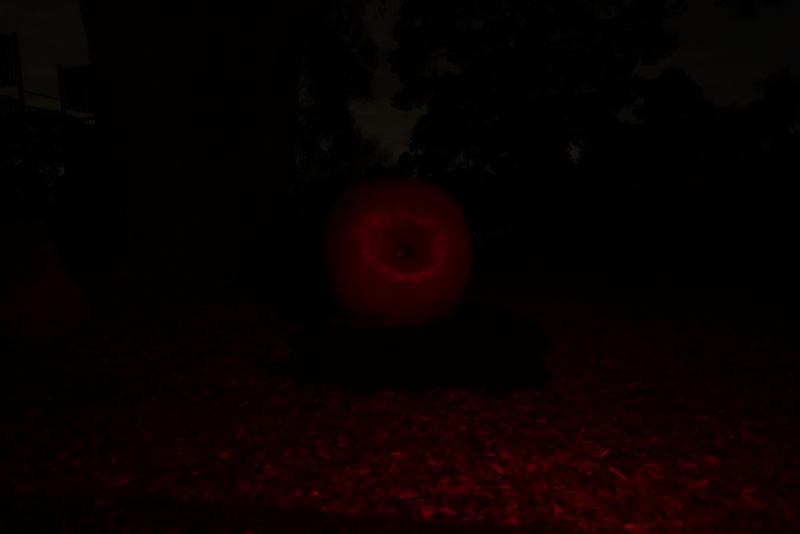
ZebraLight H502pr#
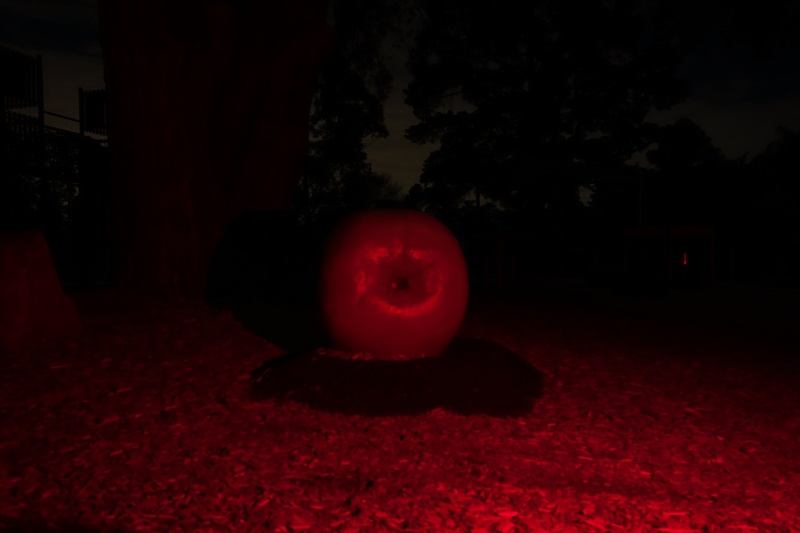
Cyansky HS5R#
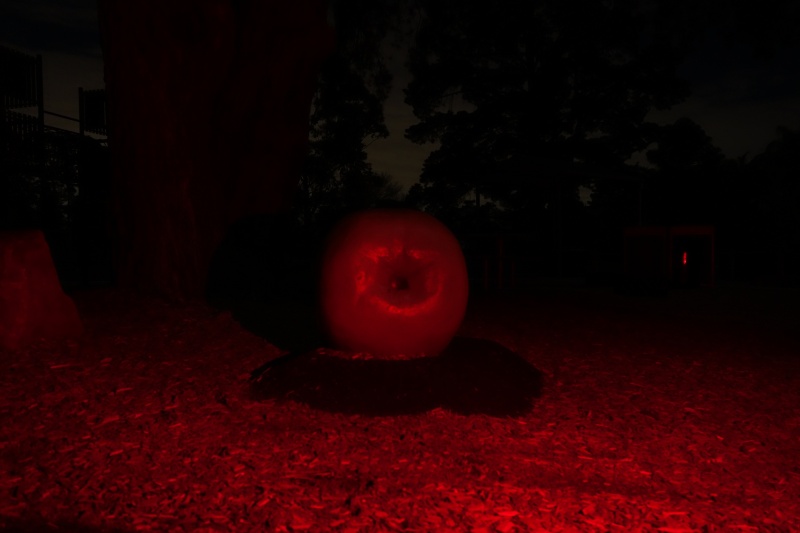
Conclusion#
The SPERAS B7 is a nice compact 3x AAA headlamp.
It has a heap of lighting options: spotlight, floodlight and a red light.
The beam produced is practical.
I like how it accepts commonly available AAA batteries and that the batteries can be replied. It is nice that SPERAS included a USB-C rechargeable LiPo. I had one issue with one of the terminals not making contact but this is easily fixed by pulling the contact of the battery compartment out slightly.
The runtimes were slightly shorter than expected when I used the included LiPo battery. S-Med (Spotlight Medium) has a pretty good runtime though.
The user interface is simple. Perhaps it is a bit too simple. I would love to be able to control the brightness levels of the spotlight and floodlight individually.
I would recommend the SPERAS B7 if you are looking for an affordable headlamp that takes three AAA batteries or a LiPo battery.
Pros:#
- Simple user interface.
- Good beam distance.
- Long runtime on S-Med (Spotlight Medium).
- Accepts three AAA batteries or a USB-C rechargeable LiPo.
Cons:#
- Lumen output is slightly lower than expected.
- Low CRI.
- Runtime fell slightly short.
Price#
The SPERAS B7 is US$25.89 from sperasflashlight.com.
